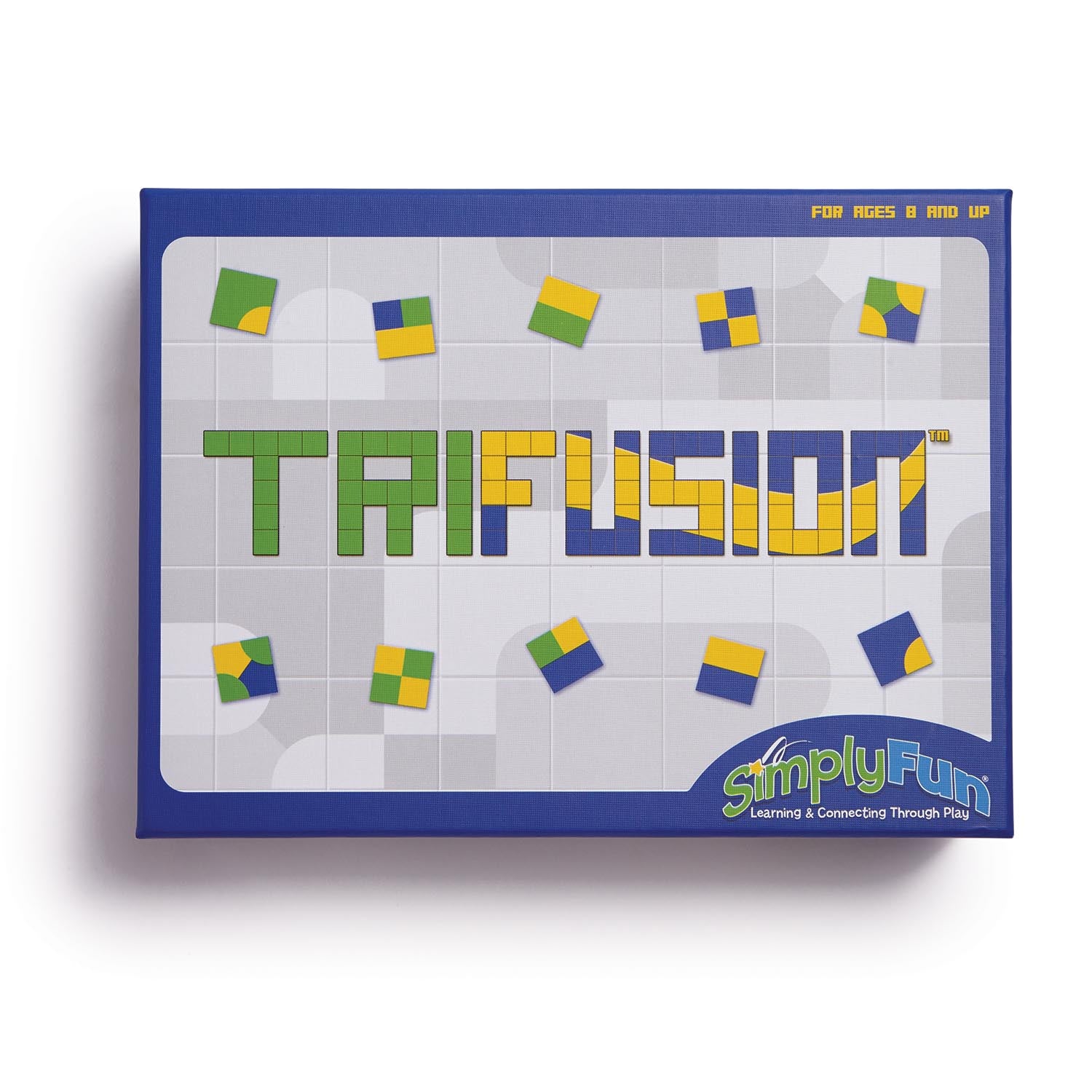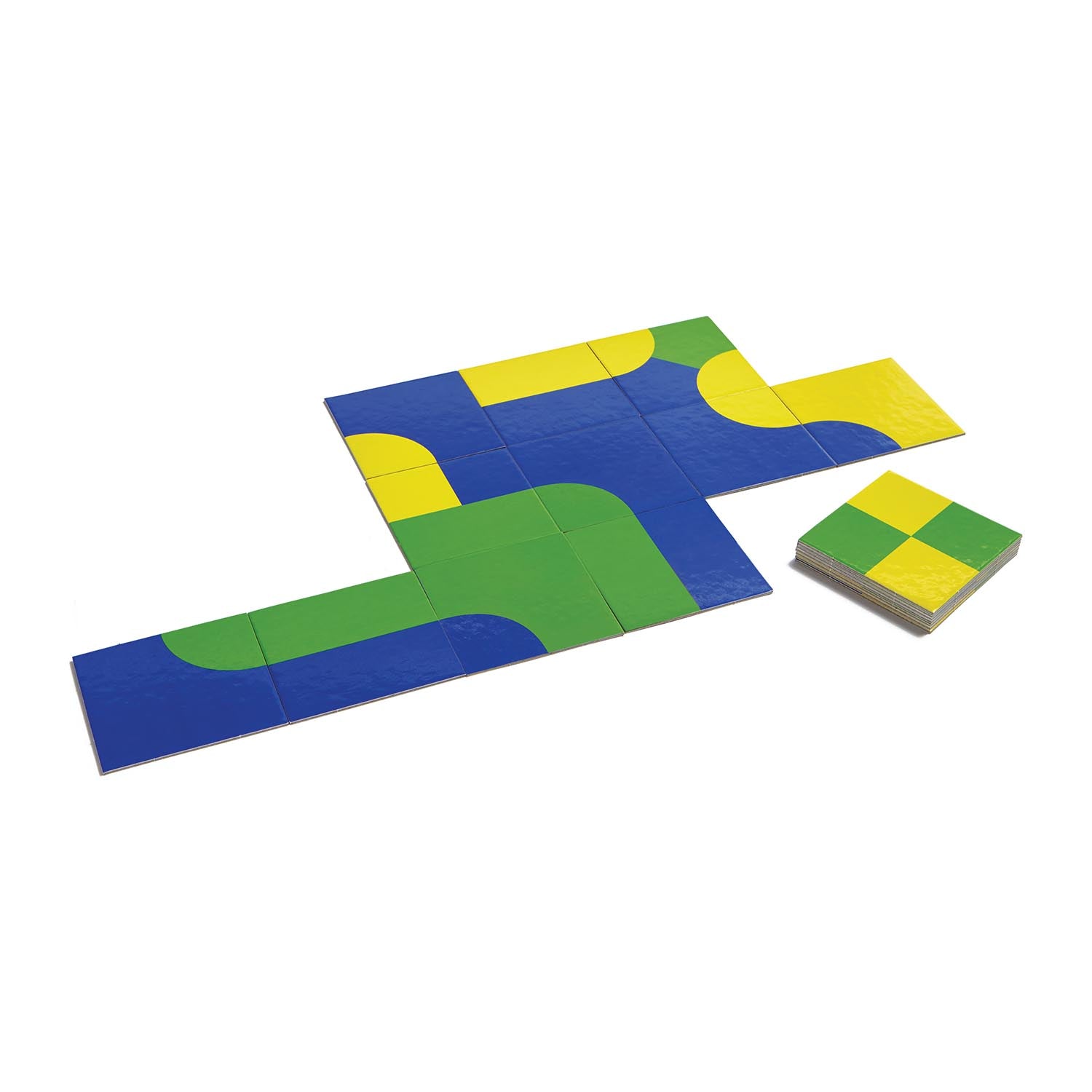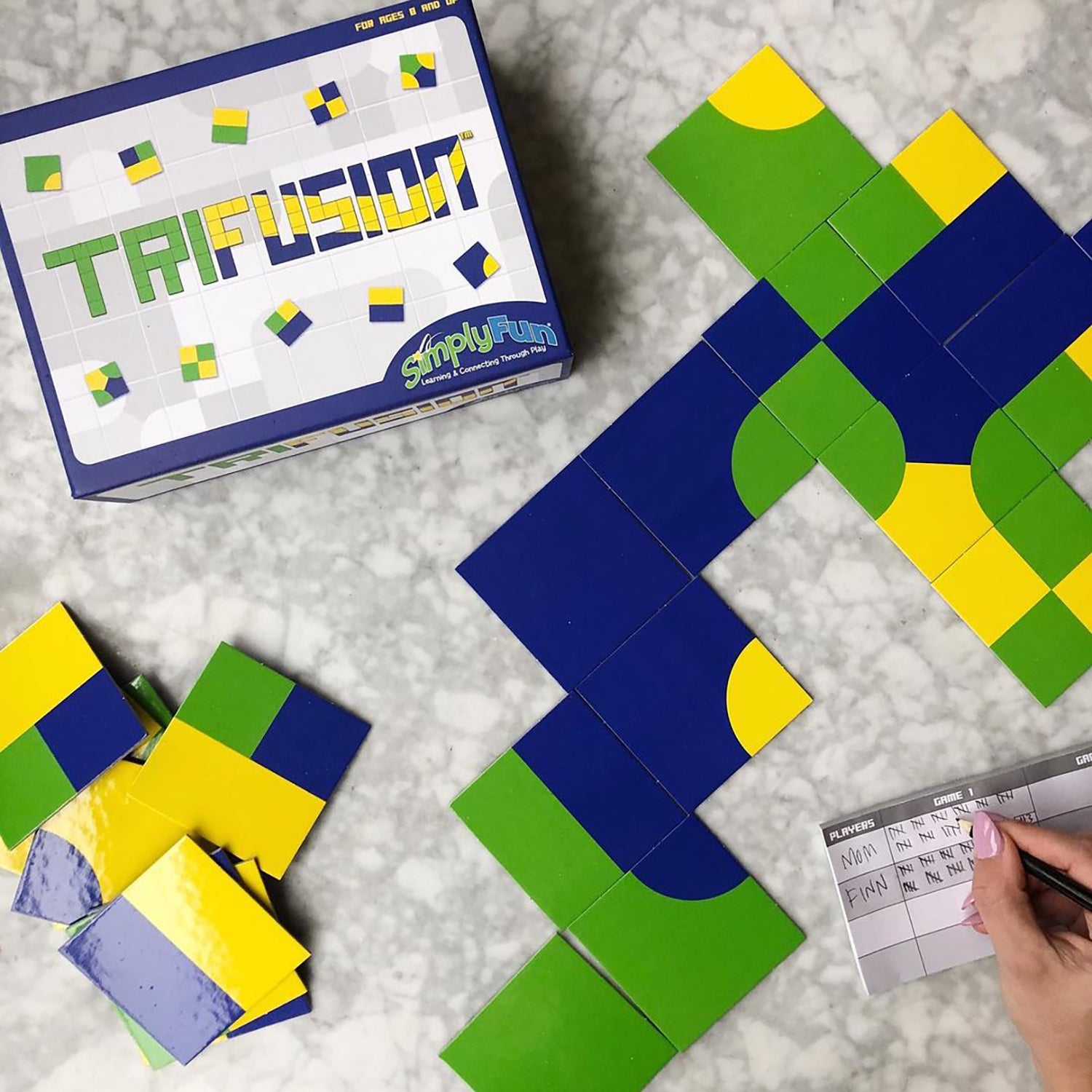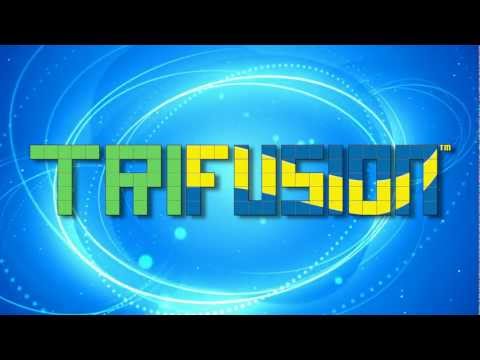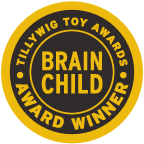Trifusion
Trifusion
2-4 players • 30 min • 8 & up
Focus: Counting
Couldn't load pickup availability
Plan, create and build the largest connected color group for points while using spatial reasoning and counting. With endless combinations and strategies, every game is a new adventure!
Skills: Spatial Reasoning, Planning, Counting
Game Includes
Game Includes
- 48 Game Tiles
- 1 Score Pad
- 2 Pencils
- 1 Rules Booklet
Share
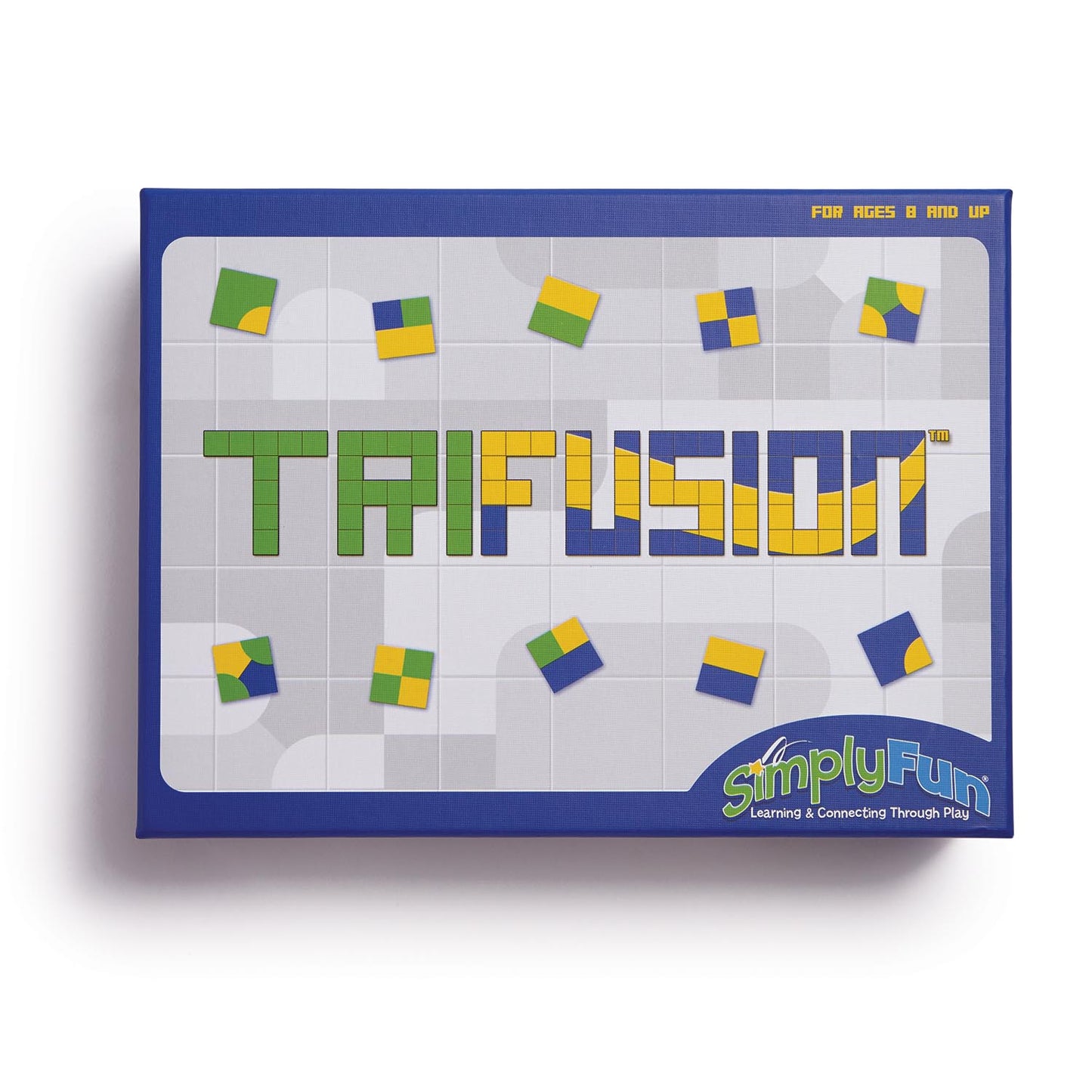
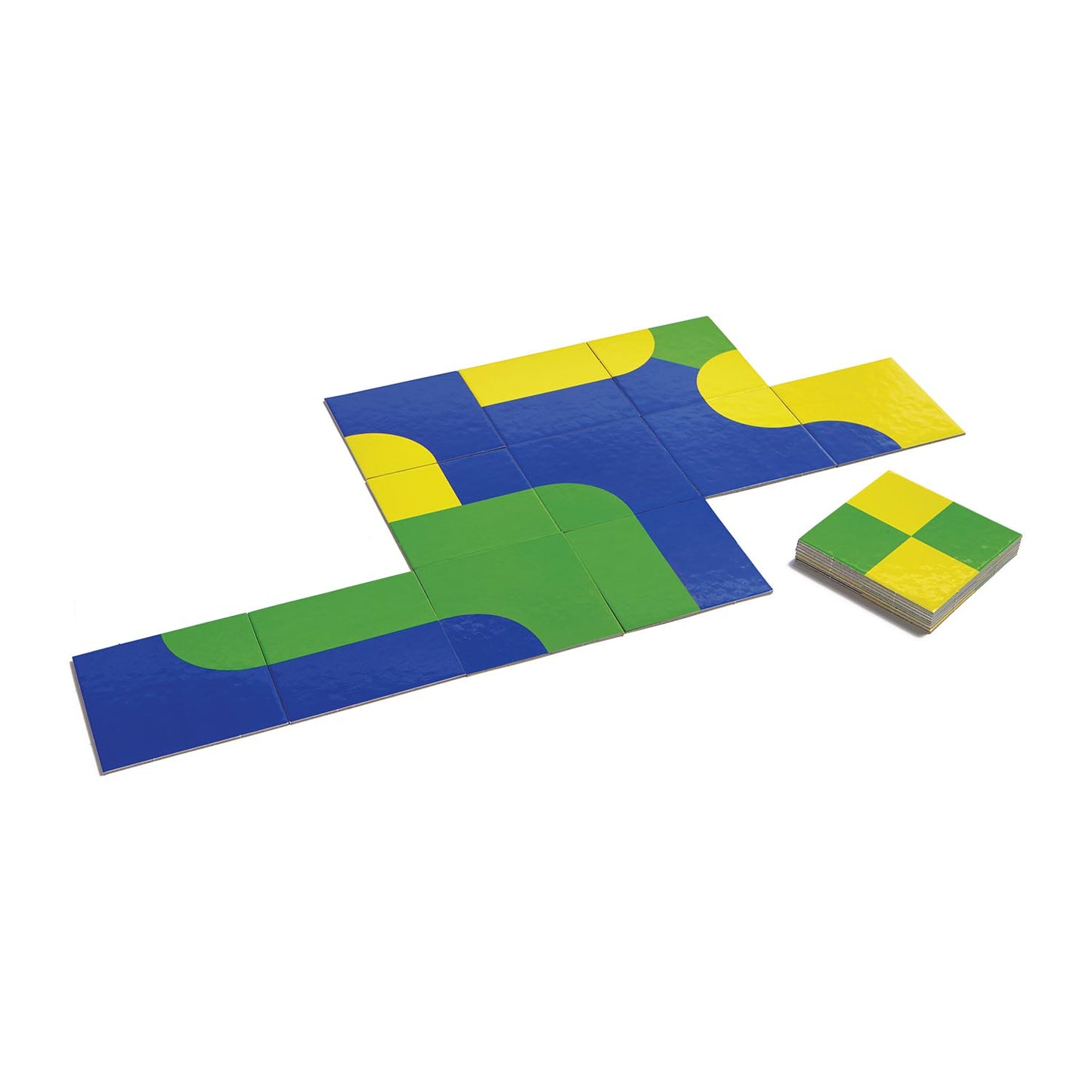
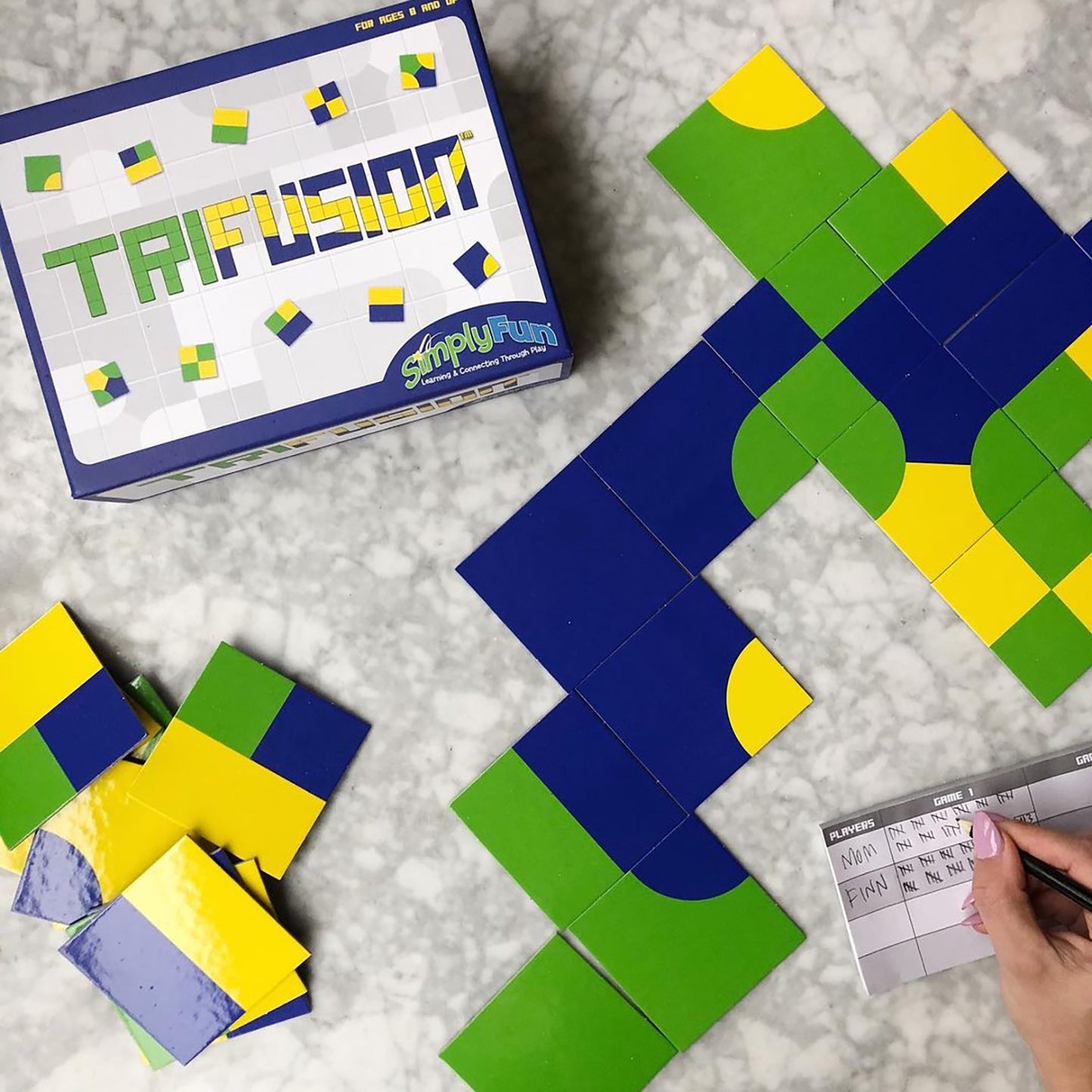
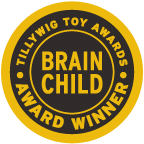

Collapsible content
How to Play
Educational Standards
Core Standard* Math
Math
- Operations and Algebraic Thinking
- Add and subtract within 20. Grade Levels 1st, 2nd
- Number & Operations in Base 10
- Extend the counting sequence. Grade Level 1st
- Mathematical Practice
- Look for and make use of structure. Grade Levels 3rd, 4th
Skills
Explore
What Does Child Do To Use Skill In The Game?
Players explore the existing pattern on the table to determine where there are options for play.
How Parents Can Assist Learning
Parents can encourage children to explore all the options, not just pick the first match of colors on the tile they see. Encourage children rotate their Trifusion pieces to look for different matching possibilities.
Learning Implications and Educator Support
Children are developing spatial relations skills, particularly geometric construction, geometric deconstruction, and spatial organization and configuration.
Educators can encourage children to explore all the options, not just pick the first match of colors on the tile they see. Encourage children rotate their Trifusion pieces to look for different matching possibilities.
Determine
What Does Child Do To Use Skill In The Game?
Players determine which tiles can or cannot be played on a turn
How Parents Can Assist Learning
Encourage children to rotate tiles to help visualize if it can be played on the board.
Remind children that they score points for the number of tile adjacent to their tile which connect to the same color(s). This will help them determine which tile and orientation of tile to play for maximum score.
Learning Implications and Educator Support
Children are developing spatial relations skills, particularly geometric construction, geometric deconstruction, and spatial organization and configuration.
Encourage children to rotate tiles to help visualize if it can be played on the board.
Compare
What Does Child Do To Use Skill In The Game?
Players examine the color matches.
How Parents Can Assist Learning
Parents can help children see mismatches or point out other matches for a tile that a child can consider. Also,when it is not their turn, encourage children look closely at their tiles and open spots on the Trifusion game area comparing possible locations to place tiles for maximum scoring.
Learning Implications and Educator Support
The most advanced form of comparison in this game is the comparing of mental maps. When a child has the opportunity to place a one of his or her Trifusion tiles, the child needs to think about and compare the different color pathways or patterns that migh be created. This type of mental mapping and comparison is great for developing spatial awareness and transformational thinking. Transformational thinking underlies skills like puzzle solving and art creation.
Predict
What Does Child Do To Use Skill In The Game?
Players predict which placement of a tile will result in a greater score.
How Parents Can Assist Learning
Parents can remind children to think about placement in relation to points and ask, "Which of these options do you think will give you more points. Count it out in your head."
Learning Implications and Educator Support
Predicting involves skills like analysis, observation, empathy and interpretation. Educators can prompt children to practice predicting by asking questions like "what tile do you think I'll play next?"
Educators can remind children to think about placement in relation to points and ask, "Which of these options do you think will give you more points. Count it out in your head."
Plan
What Does Child Do To Use Skill In The Game?
Players think about other players' possible moves and may choose to make a scoring or blocking move with one of their own tiles.
How Parents Can Assist Learning
Parents can discuss and help children organize tiles to make the largest patterns or connections, until they have mastered game sufficiently to play on their own. In particular, try helping children visualize different paths that can be created based on their existing tiles and those on the board. Talking about options supports visualization and spatial reasoning skill development.
Learning Implications and Educator Support
Planning is an important skill for developing strategic thinking and reaching a goal. Educators can encourage children to look at options for scoring the most points on a turn, as well as setting up for scoring points on subsequent turns. Ask questions like "What are the largest patterns or longest color connections can you make?" or "If you place a tile, will you be able to connect other tiles to it on your next turn?"
Also, Trifusion is a good game for helping children develop organizational skills as they plan moves based on set of tiles, and adaptive skills as they creatively respond to moves of opponents. Organizing is essential to effective planning and is an important executive functioning skill.
Experiment
What Does Child Do To Use Skill In The Game?
Players mentally try out moves, then pick what they think is the best move.
How Parents Can Assist Learning
Parents can encourage children to experiment by placing tiles on the board prior to making final choice for a move. Provide positive feedback to children as they select, switch and move pieces around. Mastering Trifusion will often result in several missteps prior to ultimate success. Positive support can help children develop persistence and resilience.
Learning Implications and Educator Support
When first learning to play, remind children to rotate their tiles 90 degrees at a time. Educators can also encourage experimentation by suggesting that a child play a tile, even if they are unsure whether it will create the highest score. Trying different Trifusion tiles in different situations will help children learn what moves are most and least effective in various circumstances. Trying new things when you are unsure, yet in a safe environment, helps build confidence and a positive approach to failure.
Practice
What Does Child Do To Use Skill In The Game?
Players learn from their play what strategies are most successful.
How Parents Can Assist Learning
Parents can remind children to think about what they did when the got their largest score. What made the score high?
Learning Implications and Educator Support
Educators can remind children to think about what they did when the got their largest score. What made the score high?
Solve
What Does Child Do To Use Skill In The Game?
Each time a player places a tile to score or successfully block, they are solving a problem in the game.
How Parents Can Assist Learning
There is no special adult support required.
Learning Implications and Educator Support
When first learning to play, remind children to rotate their tiles 90 degrees at a time. Educators can encourage children to try different Trifusion tiles in different situations to help him or her learn what moves are most and least effective in various circumstances. Trying new things when you are unsure, yet in a safe environment, helps build confidence and a positive approach to failure.
Review
What Does Child Do To Use Skill In The Game?
Players may review if encouraged. See Implications for Learning and Adult Support.
How Parents Can Assist Learning
At the end of the game, review what strategies worked or what could have been done differently.
Learning Implications and Educator Support
At the end of a game, review closely which tiles were placed, and where and when they were placed. Ask the child to reflect on what s/he did to make the connections and patterns.
Demonstrate
What Does Child Do To Use Skill In The Game?
Players can potentially explain their thinking if asked, but it is not required in the game.
How Parents Can Assist Learning
This is a good strategy for parents to encourage children to analyze their play. Say, "That was a great move! What were you thinking when you picked that spot for your tile?"
Learning Implications and Educator Support
This is a good strategy for educators to encourage children to analyze their play. Say, "That was a great move! What were you thinking when you picked that spot for your tile?"
Imagine
What Does Child Do To Use Skill In The Game?
How Parents Can Assist Learning
Learning Implications and Educator Support
Create
What Does Child Do To Use Skill In The Game?
How Parents Can Assist Learning
Learning Implications and Educator Support
*Data compiled from CCSSI ELA Standards, WA Science Standards, and Washington Social Studies Standards
Special Needs
Cognitive
Suggestions for How to Modify Play Experience
Allow children to play the game by matching any one section, in addition to the whole side of a square. This reduces the number of characteristics the child has to match on any one square. Children who have cognitive delays will find this more manageable. And children with attentional issues will find it easier to focus on just one aspect. This will result in an interesting spread out board.
Communication
Suggestions for How to Modify Play Experience
Start with one of the one of the squares that has all four colors in the middle. Using the game modifications in the "Cognitive" section, each child gives a square to the person next to them and tells them what color to match. That player then has to examine the board and find a place to match it. The first player indicates if the match is good, or helps the child find a better location. The goal is to use all of the squares in an interesting pattern that spreads out in a wide area. This modification of the game encourages children to communicate using color and spatial words. It also encourages helping each other toward a common goal.
Sensorimotor
Suggestions for How to Modify Play Experience
There are no specific modifications that can be made for this game. If a child has difficulty manipulating the tiles, they can direct another player where to place the tile.
Social Emotional/Behavioral
Suggestions for How to Modify Play Experience
Children with cognitive delays may also benefit from playing with a partner. This will enable the delayed child to learn from a peer. It will also encourage cooperation and communication.
Start with one of the one of the squares that has all four colors in the middle. Using the game modifications in the "Cognitive" section, each child gives a square to the person next to them and tells them what color to match. That player then has to examine the board and find a place to match it. The first player indicates if the match is good, or helps the child find a better location. The goal is to use all of the squares in an interesting pattern that spreads out in a wide area. This modification of the game encourages children to communicate using color and spatial words. It also encourages helping each other toward a common goal.
Vision
Suggestions for How to Modify Play Experience
This game is highly visual. No special modifications can be made, but only children with severe visual impairment will be unable to play the game because the colors have high contrast and the shapes are large.
Hearing
Suggestions for How to Modify Play Experience
No modification required.
*Data compiled from CCSSI ELA Standards, WA Science Standards, and Washington Social Studies Standards
Autism
Autism Strengths & Interests
Short Summary of Strengths & Interests
- Visually scan to find options.
- Enjoys matching colors.
- Identify patterns.
Is good at matching visual items
Is This Game Appropriate? Yes
Description
Visual matching is the main skill used in Trifusion. Children match colors and line up tiles to match as many color fields as possible to earn points.
Has a good memory for sensory details, including visual, touch, taste and smell
This game is not appropriate
Has a good memory for words, phrases and dialouge
This game is not appropriate
Has a good memory for pictures, numbers and patterns
This game is not appropriate
Likes to put things in order or a sequence
Is This Game Appropriate? Yes
Description
The game requires children to order the tiles so that they align with color patterns. Children who are good at color matching and like to align things, will like Trifusion.
Learns through visualizing or "replaying" actions in their mind
This game is not appropriate
Likes activities with rules, such as math and phonics
This game is not appropriate
Is very concrete and literal
Is This Game Appropriate? Yes
Description
Only three colors are used on the tiles, and matches are easily seen to be correct or incorrect. This makes the game very straight forward for children who prefer literal activities
Learns in small "chunks" (for example, phone numbers are 3 chunks of number xxx-xxx-xxxx that are combined together)
This game is not appropriate
Is good at nonverbal reasoning and logic
Is This Game Appropriate? Yes
Description
Children use nonverbal logic as they orient and place tiles to make color matches. Additionally, the game becomes more spatially challenging and rewarding as players try to match more than one side of a tile to multiple tiles on the board. However, players are not required to discuss their thinking to be successful in Trifusion.
Likes spatial problem solving
Is This Game Appropriate? Yes
Description
Many children are strong at spatial reasoning and pattern recognition. Trifusion is a good game to hone these skills as children need to scan the tiles to find those with the right spatial arrangements of colors to score the most points when put together.
Can read well with good vocabulary, though may not fully comprehend content
This game is not appropriate
Likes to use and has good fine motor skill
Is This Game Appropriate? Yes
Description
Some children enjoy activities like puzzles and building blocks that involve fine motor skills. Trifusion is very puzzle-like and, therefore, will appeal to these children.
Likes established routines or set ways of doing things
This game is not appropriate
Likes manipulating, constructing or building things
Is This Game Appropriate? Yes
Description
Some children with autism like manipulatives and constructing activities like playing with building toys, collaging and action figures. Puzzle games like Trifusion are a good way for these children to use and strengthen skills as they rotate tiles to examine them for potential placement, then carefully place them so they align to tiles in the play area.
Likes to use and has good musical abilities
This game is not appropriate
Likes to use and has good drawing skills
This game is not appropriate
Autism Special Considerations
Appears to ignore other's communication and/or has difficulty giving eye contact to a communication partner
Is This Game Appropriate for Child with Characteristic? Yes
Can Child with Characteristic Play Game w/o Modification? Yes
Strategies for Developing Compensatory Skills:
Sit at an angle to the child, so direct eye contact is not needed.
Look at the game instead of each other.
Use unusual or exaggerated inflection to begin a communication about the game. This attracts the child's attention.
Has difficulty understanding complex verbal directions
Is This Game Appropriate for Child with Characteristic? Yes
Can Child with Characteristic Play Game w/o Modification? No
Strategies for Developing Compensatory Skills:
Trifusion is not an appropriate game for children who have difficulty understanding complex directions. Children need to understand spatial options and multiple matching, as well as how to connect spaces for scoring. Understanding what cannot be placed in different locations is also a difficult concept for children with special needs.
Uses vocabulary inaccurately or demonstrates echolalia (repeating another's speech)
Is This Game Appropriate for Child with Characteristic? Yes
Can Child with Characteristic Play Game w/o Modification? No
Strategies for Developing Compensatory Skills:
Respond to immediate echolalia (repeating what was just said) by rephrasing the child's response into a correct format, so the child can hear and repeat that phrase. For example, assume you are playing with a child named Andy and you say, "Your turn," and Andy repeats, "Your turn." You can say, "It's Andy's turn. You say, my turn." This allows the child to hear and repeat the correct response. Eventually, the child will pick up the pattern of response.
Delayed echolalia (repetition of previously heard comments) may have a hidden meaning or association. Look for connection in the phrase used to the current situation. For example, the child says, "After these messages we'll be right back!" Think what the repeated phrase is associated with for the child. Try to interpret what is meant and rephrase it for the child. For example, you might respond by saying, "It sounds like you want a break for a few minutes. Is that what you mean? You can tell me, 'I need a break.'"
Gets stuck repeating a verbal topic or physical actions and/or has difficulty attending to others' actions or topic.
Is This Game Appropriate for Child with Characteristic? No
Can Child with Characteristic Play Game w/o Modification?
Strategies for Developing Compensatory Skills:
Children need to pay attention to others' plays so they can determine their next move. For this reason, the game may be difficult for children with special needs.
Has difficulty producing speech/communication
Is This Game Appropriate for Child with Characteristic? Yes
Can Child with Characteristic Play Game w/o Modification? Yes
Strategies for Developing Compensatory Skills:
Use augmentative communication, such as picture cards. For example, a picture of person pointing to another person means "your turn." Communication is not required to play.
Has difficulty sequencing multi-step actions and/or doing complex abstract tasks
Is This Game Appropriate for Child with Characteristic? No
Can Child with Characteristic Play Game w/o Modification?
Strategies for Developing Compensatory Skills:
Trifusion may be difficult for children who have difficulty thinking about multiple variables at one time or have difficulty with rules for what to do and what not to do.
Demonstrates difficulty initiating and maintaining social interactions
Is This Game Appropriate for Child with Characteristic? Yes
Can Child with Characteristic Play Game w/o Modification? Yes
Strategies for Developing Compensatory Skills:
Develop a social story to be read at the start of a game. A social story is a short booklet that illustrates how a child can use positive social skills. It includes two to five descriptive statements and a directive statement. For example: "When I watch others, I will know when it is my turn. Others like me when I take turns. I will watch what others do with their pieces and listen to what they say. Others like it when I talk about the game." Add photos or drawings of the child doing the actions described in the story.
Role play social situations and reinforce appropriate words and actions. For example, role play commenting on another player's turn. For instance, "You connected two different colors."
Use video feedback of positive social behaviors. Video of actual play enables children to see what they or others did. Appropriate actions and interactions can then be discussed.
Acts out or demonstrates avoidance behaviors when frustrated, overwhelmed, or needs more sensory input.
Is This Game Appropriate for Child with Characteristic? Yes
Can Child with Characteristic Play Game w/o Modification? No
Strategies for Developing Compensatory Skills:
Reduce extraneous noise or allow the child to wear head phones or ear plugs if loud sounds cause anxiety.
A weighted vest worn during the game may provide additional pressure input and thus reduce fidgeting due to sensory needs. Pressure can be calming when used for no more than 20 minutes at a time.
Practice a phrase to ask for help and role play situations in the game where it is needed.
Provide techniques for self-calming, such as holding a special toy.
Allow time for movement. For example, a child who needs to move frequently can be given an opportunity to 'celebrate' their turn by running around the table or jumping up and down 10 times.
Has short attention span for non-preferred activities
Is This Game Appropriate for Child with Characteristic? No
Can Child with Characteristic Play Game w/o Modification?
Strategies for Developing Compensatory Skills:
Not recommended for children with a short attention span, unless color matching games are a preferred activity.
Needs sameness or consistent routines and/or has difficulty with transitions from one activity to another
Is This Game Appropriate for Child with Characteristic? Yes
Can Child with Characteristic Play Game w/o Modification? Yes
Strategies for Developing Compensatory Skills:
Play games at the same time every day, so the child anticipates the game routine.
Change the location of the game, so the child may play in different rooms, at the table, or on the floor. This will build tolerance for variation.
Prepare the child ahead time for the introduction of a new game. Talk about aspects that will be motivating for the child, and let them explore the parts of the game before setting out the whole game.
Provide a structure for placement of game pieces that can be the same each time the game is played. For example, have a specific location for where the board goes, the pieces, etc. Provide choices for how the child can be involved in set up or clean up. For example, you might ask, "Do you want to hand out the people or set up the board?"
Involve the child verbally and with actions for the transition to the game table or at the end of game play. For example, you might say, "Let's look at the pictures on the game box and guess what it is about."
Use an object cue. Let the child hold an object from the game or activity you want to introduce prior to the transition. For example, if you were intending to play Trifusion, you would hand the child a color tile from the game and say, "Look here is a color tile. Let's find the game it goes in."
Has difficulty understanding others' feelings, intentions, and the reasons for others' actions.
Is This Game Appropriate for Child with Characteristic? Yes
Can Child with Characteristic Play Game w/o Modification? No
Strategies for Developing Compensatory Skills:
Model and point out what others are feeling and comment on their facial expressions or words.
Discuss what causes feelings in others. For example, "You are happy because you got 5 points. But, look at Joe's face. He is sad because he only got one point."
Ask child to explain their own feelings and intentions.
Ask child to explain why other players did specific actions in the game. For example, why did Mark stop his turn?"
*Data compiled from CCSSI ELA Standards, WA Science Standards, and Washington Social Studies Standards
Extended Play
Extra Ways to Play the Game
Experiment with creating patterns such as a checkerboard or rows of colors.
Materials Needed
No additonal materials needed.
Developmental Benefits
Making patterns supports a child's geometry and spatial reasoning abilities. Additionally, this activity helps fine motor development. Because the child is making their own patterns, this activity also advances imaginative and creative thinking. This activity can be collaborative and, therefore, supporing a range of important social emotional skills.
Extra Ways to Play the Game
Player 1 says a color (yellow, green or blue) and a shape (circle, square, rectangle). Player 2 places tiles together to make a circle, square, rectangle. That ends a turn. Play rotates to the person to the left of Player 1. An alternative can be to make as many shapes as possible in 1 minute. Another alternative is to give a point for each tile used to make a square or rectangle.4
Materials Needed
No additonal materials needed.
Developmental Benefits
Making specific geometric shapes directly relates to and expands on the core curriculum of the game. Additionally, children need to change perspectives in order to solve same problem with different approaches. This helps build creative-problem solving skills and a core cognitive ability.
Extra Ways to Play the Game
This is an alternative game play mechanism. On your turn, you can place a tile on top of another tile, so long as your tile does not violate any other rule of the game. To score, add up the points as normal.
Materials Needed
No additonal materials needed.
Developmental Benefits
This adds an additional element of strategy to the game, allowing a player to potentially gain points that would have otherwise been unavailable or to change the pattern in a way the blocks another player.
*Data compiled from CCSSI ELA Standards, WA Science Standards, and Washington Social Studies Standards
Collapsible content
How to Play Video & Transcript
This is a visual-mapping strategy game for 2-4 players that teaches pattern recognition and problem solving with a unique scoring element.
The game contains 48 game tiles made up of three different colors. Note there are exactly two of each pattern. You also get a pad and pencils so you can keep track of your scores.
This game emphasizes identifying patterns and building connections, skills which are used in STEM fields (science, technology, engineering and math). Trifusion also rewards tactical thinking and planning ahead.
To play the game, give each player one of the solid colored tiles. Shuffle the rest of the game tiles and divide them equally among all players. Everyone must turn their tiles face up so all holdings are visible. This can be very helpful to making strategic choices during your games.
Let’s get started. The oldest player should keep score, and the youngest player gets to play first. They may select any of their tiles and place it in the center of the table. They instantly receive 5 points for starting the game. Note this is an exception to normal scoring, only done for the first player’s turn.
On all future turns, players place one game tile next to those already in the center of the table such that all sides line up by color.
They receive points for the color chains the tile connects to, not including the new tile being added. The green area I’m connecting to is on one tile, and the blue area I’m connecting to is also one tile, for a total of 2 points.
Here’s a bigger example. The blue area I’m connecting to is on just one tile, but the green area is on three tiles, and the yellow area spreads out across all four of these tiles. My score for this play is 1+3+4 = 8 points. Not bad!
The game ends when the final tile is played. The player with the highest point total wins the game!
And that’s how you play Trifusion. Like many of our games, it’s simple enough for a child to teach, but deep enough for a group of adults to get really worked up over the outcome! Have fun with it.
Subscribe for More Fun!
Be the first to know about new games, exclusive offers and more.
- YouTube
- TikTok
- X (Twitter)
- Choosing a selection results in a full page refresh.
- Opens in a new window.



